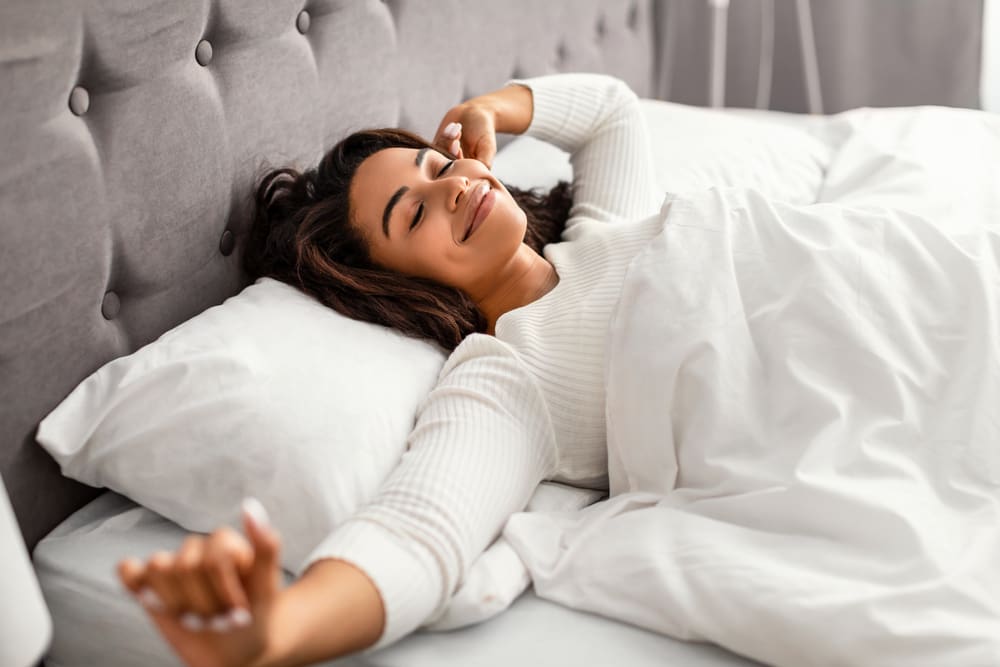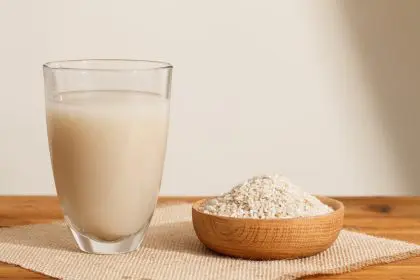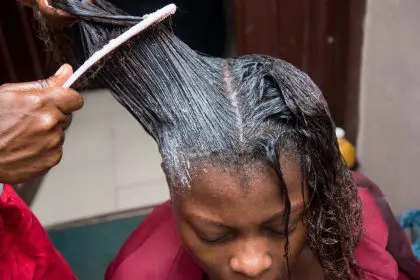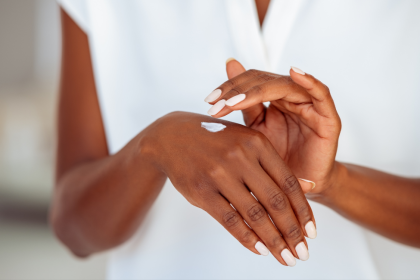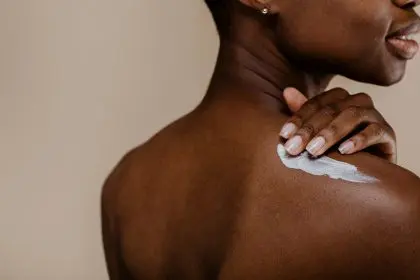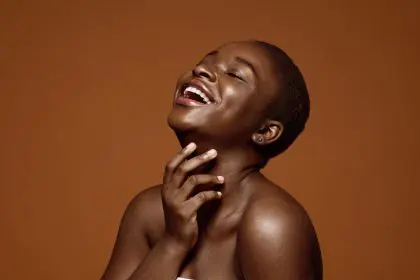That comfortable side-sleeping position you’ve loved for years might be carving lines into your face every single night. While you’re dreaming peacefully, your pillow is essentially iron-pressing creases into your skin for eight hours straight. Those sleep lines you see in the mirror each morning aren’t just temporary bedhead marks, they’re previews of the permanent wrinkles heading your way.
Your face spends roughly one-third of your life mashed against fabric, and gravity isn’t doing you any favors during those hours. The pressure, friction, and repetitive folding that happens when you sleep on your side or stomach creates mechanical stress on your skin that compounds night after night, year after year.
Back sleeping really can prevent many types of wrinkles, but the reality is more nuanced than beauty influencers would have you believe. The position of your head during sleep affects different areas of your face in specific ways, and understanding these patterns can help you make smarter choices about how you spend those precious unconscious hours.
Why your favorite sleep position is sabotaging your skin
When you sleep on your side, your face gets compressed against the pillow in the same spots night after night. This repetitive pressure creates what dermatologists call “sleep wrinkles” or “pillow lines” that develop in predictable patterns based on how your face folds against the surface.
Side sleepers typically develop vertical lines on the cheek that’s pressed against the pillow, crow’s feet that extend further than they would from just sun damage, and nasolabial folds that deepen on the side they favor. If you always sleep on your right side, you’ll likely notice more pronounced aging on that side of your face over time.
Stomach sleeping is even worse for your facial skin because it forces your face into extreme contortions for hours at a time. Your neck has to turn dramatically to one side, creating asymmetrical pressure patterns and stretching the skin in unnatural directions. This position also increases contact between your face and potentially bacteria-laden pillowcases.
The mechanical forces acting on your skin during non-back sleeping positions are similar to what happens when you repeatedly fold a piece of paper. Eventually, those creases become permanent because the skin loses its ability to bounce back to its original smooth state.
The science behind sleep-induced aging
Your skin produces less collagen and elastin as you age, making it less resilient to mechanical stress. Young skin can withstand nightly pillow pressure and bounce back to smoothness each morning, but older skin gradually loses this recovery ability, causing temporary sleep lines to become permanent fixtures.
The repetitive nature of sleep positioning means you’re essentially doing the same damaging motion to your face every night for decades. Unlike sun damage that varies based on your daily activities and sun exposure, sleep wrinkles develop in exactly the same spots with clockwork regularity.
Facial skin is thinner and more delicate than skin on other parts of your body, making it particularly vulnerable to pressure-induced damage. The areas around your eyes, mouth, and cheeks are especially susceptible because the skin there has less underlying fat and muscle support.
During sleep, your skin goes into repair mode, but if it’s simultaneously being subjected to mechanical stress from pillow contact, the repair processes can’t work optimally. Your skin is trying to regenerate while being actively damaged, creating a cycle that favors wrinkle formation over smooth skin maintenance.
Back sleeping benefits that go beyond wrinkle prevention
Sleeping on your back doesn’t just protect your facial skin from pillow damage, it also promotes better spinal alignment and reduces pressure on joints. This position allows your head, neck, and spine to rest in a neutral position, potentially reducing neck pain and back problems that can affect your overall well-being.
The improved circulation that comes with back sleeping can benefit your facial skin by ensuring better blood flow and nutrient delivery during the night. When your face isn’t compressed against a pillow, blood can circulate more freely, supporting the skin’s natural repair and regeneration processes.
Back sleeping also reduces contact between your face and potentially dirty pillowcases, which can help prevent acne breakouts and bacterial infections. Your facial skin gets to breathe freely instead of being pressed against fabric that may harbor oils, dead skin cells, and other pore-clogging substances.
This sleep position can also reduce puffiness and under-eye bags because gravity helps prevent fluid from pooling in your facial tissues. When you sleep on your side or stomach, gravity can cause fluids to accumulate in certain areas, creating morning puffiness that takes time to resolve.
Why changing sleep positions is harder than you think
Most people establish their preferred sleep positions during childhood and maintain them throughout their lives. Trying to consciously change how you sleep feels unnatural and can initially disrupt your sleep quality, making it tempting to give up and return to familiar positions.
Your body has muscle memory for your usual sleep posture, and your nervous system associates certain positions with relaxation and safety. Forcing yourself into an unfamiliar position can trigger subtle stress responses that make it harder to fall asleep and stay asleep.
Physical factors like sleep apnea, acid reflux, or pregnancy can make back sleeping uncomfortable or even dangerous for some people. These conditions require side sleeping for health reasons, making wrinkle prevention a secondary concern to overall well-being and safety.
Many people find that they automatically roll into their preferred position during the night, even when they start on their backs. Sleep position changes happen unconsciously, so you might go to bed with the best intentions but wake up in your usual side-sleeping posture.
Practical strategies for successful back sleeping
Using a thin pillow or no pillow at all can make back sleeping more comfortable by preventing your neck from being pushed into an unnatural forward position. Many people use pillows that are too thick for back sleeping, creating neck strain that makes the position feel uncomfortable.
Placing a small pillow or rolled towel under your knees can help maintain the natural curve of your lower back and make back sleeping feel more supportive. This simple adjustment often makes the difference between comfortable back sleeping and tossing and turning all night.
Some people benefit from using a cervical pillow designed specifically for back sleepers, which provides targeted support for the natural curve of your neck. These specialized pillows can make back sleeping feel more natural and comfortable than traditional pillows.
Creating physical barriers with body pillows or positioning aids can help prevent unconscious rolling during the night. Some people even use tennis balls sewn into their pajama sides to make side sleeping uncomfortable enough to maintain back sleeping position.
The limitations of sleep position for wrinkle prevention
While back sleeping can definitely help prevent certain types of wrinkles, it’s not a magic solution for all signs of facial aging. Sun damage, genetics, facial expressions, and the natural aging process all contribute to wrinkle formation in ways that sleep position can’t address.
Expression lines from smiling, frowning, and other facial movements will develop regardless of how you sleep. These dynamic wrinkles form perpendicular to muscle movements and aren’t related to pillow contact or sleep positioning.
Volume loss and skin sagging that occur with age aren’t prevented by back sleeping. These changes happen due to collagen and fat loss that occurs regardless of sleep habits, though good sleep quality can support overall skin health and potentially slow some aging processes.
Alternative solutions for non-back sleepers
If back sleeping feels impossible or unsafe for you, investing in high-quality silk or satin pillowcases can reduce friction between your face and the pillow surface. These smooth materials create less drag on your skin and can minimize some of the mechanical damage from side sleeping.
Some people benefit from using specialized anti-aging pillows designed with curves and cutouts that reduce facial contact while still providing comfortable support. These pillows attempt to combine the comfort of side sleeping with some of the skin benefits of back sleeping.
Regular pillow replacement ensures you’re not sleeping on worn, rough, or bacteria-laden surfaces that could increase skin irritation and damage. Fresh, clean, smooth pillowcases provide the best possible surface for unavoidable face-to-pillow contact.
Your nightly choice between comfort and vanity
The decision to sleep on your back for wrinkle prevention ultimately comes down to weighing cosmetic benefits against sleep comfort and quality. Poor sleep has numerous negative health effects that might outweigh the skin benefits of back sleeping if the position prevents you from getting adequate rest.
For some people, the gradual transition to back sleeping feels natural and improves both sleep quality and skin appearance. For others, forcing an unnatural sleep position creates stress and sleep disruption that negates any potential benefits.
The key is finding an approach that supports both good sleep and skin health rather than sacrificing one for the other. Your face might look younger if you sleep on your back, but only if you can actually sleep well in that position. Beauty sleep only works if you’re actually sleeping.

